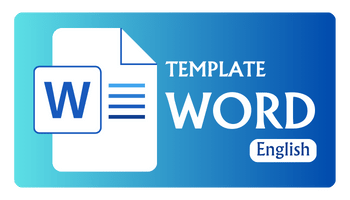Improving Public Speaking Skills through YouTube Media for Sixth Grade Students of SDN 2 Daleman, Education Subdivision Coordinator of Tulung District, Klaten Regency, Academic Year 2024/2025
DOI:
https://doi.org/10.55824/jpm.v4i4.592Abstract
This study aims to improve the public speaking skills of sixth-grade students at SDN 2 Daleman through the utilization of YouTube as an audiovisual-based learning medium. Public speaking is a crucial component of oral communication competence that needs to be developed from an early age, as it influences students’ confidence, critical thinking, and ability to express ideas in public. Initial observations indicated that most students faced difficulties in structuring their speeches systematically, using proper pronunciation and intonation, and showing appropriate expression and vocal control during presentations.
The research employed a Classroom Action Research (CAR) approach conducted in two cycles, each comprising planning, action, observation, and reflection stages. The subjects were 17 sixth-grade students, consisting of 8 boys and 9 girls. Data were collected through observation, documentation, interviews, and speech performance tests. The success indicators were determined by the increase in the number of students who met the Minimum Mastery Criteria (MMC) of 75 and improvements in specific aspects of public speaking, including expression, pronunciation, intonation, voice volume, and content structure.
The results showed a significant improvement in students’ public speaking skills through the use of YouTube media. In the pre-cycle stage, only 7 out of 17 students (41%) achieved the MMC. After the first cycle of implementation, the number increased to 10 students (58%). By the second cycle, 15 students (88%) met or exceeded the target. In addition to the quantitative improvement, qualitative enhancements were observed in students’ delivery of speech elements.
Learning improvement was also evident across multiple performance aspects, such as clarity of pronunciation, appropriate expression, dynamic intonation, mastery of content, and proper vocal projection. The effective use of YouTube, particularly through a modeling approach featuring high-achieving students as role models, proved to be a powerful motivator and conceptual clarifier. Moreover, it enabled students to engage in self-reflection by watching their own recorded speeches. Therefore, YouTube serves not only as a visual aid but also as a strategic tool to enhance oral communication skills in the context of 21st-century learning.
References
Arsjad, M., 2008. Pembelajaran Bahasa Indonesia yang Efektif. Yogyakarta: Tiara Wacana
Arsyad, A. (2015). Media Pembelajaran. Jakarta: RajaGrafindo Persada.
Black, P., & Wiliam, D. (1998). Assessment and Classroom Learning. Assessment in Education: Principles, Policy & Practice, 5(1), 7–74.
Brown, C. D. (2021). Narrative persuasion: The role of storytelling in enhancing message recall and engagement. Applied Communication Research, 22(1), 45-62.
Brown, H. D. (2007). Teaching by Principles: An Interactive Approach to Language Pedagogy (3rd ed.). New York: Pearson Education.
Brydon, Steven R., & Scott, Michael D. (2013). Between One and Many: The Art and Science of Public Speaking. Boston: McGraw-Hill.
Chen, H. W., & Davis, S. M. (2020). Vocal delivery in public speaking: Pitch, pace, and articulation for audience engagement. Speech & Communication Research, 18(2), 88-105.
Davis, E. F., & White, G. H. (2018). Visual aids in presentations: Maximizing information retention and engagement. Educational Technology & Society, 21(3), 78-95.
Depdiknas. (2008). Panduan Pembelajaran Aktif untuk Sekolah Dasar. Jakarta: Direktorat Pembinaan Sekolah Dasar, Direktorat Jenderal Manajemen Pendidikan Dasar dan Menengah.
Fulcher, G. (2003). Testing Second Language Speaking. London: Pearson Longman.
Gonsalves, T. M. (2019). Nonverbal communication in presentations: Re-evaluating Mehrabian's rule in contemporary contexts. International Journal of Body Language Studies, 12(1), 1-18.
Gunawan, H. (2012). Pendidikan Karakter: Konsep dan Implementasi. Bandung: Alfabeta.
Hidayati, N. (2019). “Pengaruh Media Video YouTube terhadap Keterampilan Berbicara Siswa Kelas V SD Negeri 3 Kedungrejo”. Skripsi. Universitas Negeri Surabaya.
Horwitz, E. K. (1986). Preliminary Evidence for the Reliability and Validity of a Foreign Language Anxiety Scale. TESOL Quarterly, 20(3), 559–562. https://doi.org/10.2307/3586302
Johnson, R. A., & Peterson, L. M. (2022). The primacy and recency effects in public speaking: Crafting powerful openings and closings. Journal of Applied Communication, 25(3), 210-225.
Kemendikbud. (2017). Panduan Gerakan Literasi Nasional: Literasi Digital. Jakarta: Kementerian Pendidikan dan Kebudayaan.
Keraf, G., 2004. Argumentasi dan Narasi. Jakarta: Gramedia
Lim, Y. J., & Park, H. S. (2018). Managing communication apprehension: Strategies for reducing public speaking anxiety. Journal of Interpersonal Communication, 30(2), 112-128.
Miller, A. K., & Jones, P. S. (2019). Strategic planning in public speaking: Defining objectives and evidence-based content. Rhetoric & Public Affairs Review, 8(4), 201-218.
Mulyasa, E. (2013). Pengembangan dan Implementasi Kurikulum 2013. Bandung: Remaja Rosdakarya.
Nasution, S. (2020). “Integrasi Teknologi Informasi dan Komunikasi dalam Pembelajaran Abad 21”. Jurnal Ilmu Pendidikan, 21(2), 98–108.
Downloads
Published
Issue
Section
License
Penulis yang menerbitkan jurnal ini menyetujui persyaratan berikut:
- Hak cipta atas artikel apa pun dipegang oleh penulisnya.
- Penulis memberikan jurnal, hak publikasi pertama dengan karya yang dilisensikan secara bersamaan di bawah Lisensi Atribusi Creative Commons yang memungkinkan orang lain untuk membagikan karya dengan pengakuan atas kepenulisan dan publikasi awal karya tersebut dalam jurnal ini.
- Penulis dapat membuat pengaturan kontrak tambahan yang terpisah untuk distribusi non-eksklusif dari versi jurnal yang diterbitkan dari karya tersebut (misalnya, mempostingnya ke repositori institusional atau menerbitkannya dalam sebuah buku), dengan pengakuan dari publikasi awalnya di jurnal ini.
- Penulis diizinkan dan didorong untuk memposting karya mereka secara online (misalnya, di repositori institusional atau di situs web mereka) sebelum dan selama proses pengiriman, karena hal itu dapat mengarah pada pertukaran yang produktif, serta kutipan yang lebih awal dan lebih besar dari karya yang diterbitkan.
- Artikel dan materi terkait yang diterbitkan didistribusikan di bawah Lisensi Internasional Creative Commons Attribution-ShareAlike 4.0








